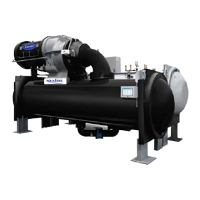
Do you have a question about the Carrier AquaEdge 19XR series and is the answer not in the manual?
General safety guidelines for operating centrifugal liquid chillers.
Warnings about potential personal injury or death if procedures are not followed.
Details on optional solid-state starters for reduced voltage starting.
Details on optional wye-delta starters for reduced voltage starting.
Details on optional variable frequency drives for 575V units.
Procedures for preparing the chiller before initial start-up.
Steps for initiating the chiller start-up sequence.
Procedures for verifying the chiller's operation after startup.
Identification of the major components of the PIC II control system.
How alarms and alerts are indicated and managed.
Overview of menu structures and operations available via ICVC.
Basic operations using ICVC softkey functions.
How PIC II controls capacity using motor speed and guide vanes.
How the PIC II operates chillers in lead/lag and standby modes.
Steps to access the service screens and enter the password.
Procedure for initiating a local start-up.
Testing procedures after service or major repairs.
Verifying VFD control while the unit is not running.
Verifying VFD control while the unit is running.
Methods for testing refrigerant leaks.
Danger associated with handling HFC-134a refrigerant.
How to interpret ICVC display messages for fault diagnosis.
Cause and remedy for excessive compressor starts.
Cause and remedy for high bearing temperature alerts.
Cause and remedy for low oil temperature alerts.
Cause and remedy for low line voltage alerts.
Cause and remedy for high line voltage alerts.
Cause and remedy for high condenser pressure during normal run.
Cause and remedy for high motor temperature during normal run.
Cause and remedy for low evaporator refrigerant temperature.
Cause and remedy for high compressor lift/surge.
Cause and remedy for low discharge superheat.
Cause and remedy for oil pressure sensor faults.
Cause and remedy for low oil pressure faults.
Cause and remedy for low chilled water flow faults.
Cause and remedy for low condenser water flow faults.
Cause and remedy for high discharge temperature faults.
Cause and remedy for low refrigerant temperature faults.
Cause and remedy for refrigerant leak sensor faults.
Cause and remedy for ISM configuration conflicts.
Alarm indicating guide vane calibration is required.
Cause and remedy for loss of communication issues.
Cause and remedy for high condenser water flow faults.
Cause and remedy for motor overload trip.
Cause and remedy for motor locked rotor trip.
Cause and remedy for starter lock rotor trip.
Cause and remedy for ground fault trips.
Cause and remedy for phase reversal trips.
Cause and remedy for line frequency trip faults.
Cause and remedy for starter module failure.
Cause and remedy for 1CR start circuit faults.
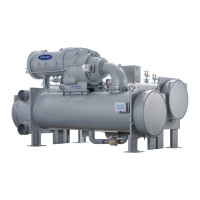

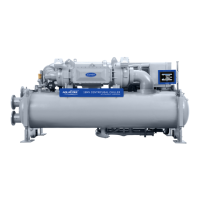
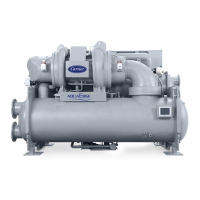


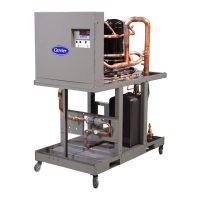





